To write an email to your professor that opens doors, start with a clear subject line reflecting your message's purpose. Use a professional greeting, like "Dear Professor [Last Name]," and introduce yourself briefly. Clearly state your request or question and keep your tone respectful and concise. Proper grammar and a polite closing are crucial, as they reflect your professionalism. Remember to express gratitude for their time. These simple steps can help you build a positive relationship, paving the way for future opportunities. Want to uncover more insider tips? There's plenty more to explore!
Key Takeaways
- Use a specific subject line that clearly states the purpose of your email to capture the professor's attention.
- Introduce yourself with relevant details, including your name, year, major, and course for context.
- Clearly articulate your request or question while keeping the message concise and to the point.
- Express genuine gratitude for the professor's time and assistance, fostering a positive impression.
- Follow up respectfully if you don't receive a response, demonstrating your continued interest and commitment.
Introduction
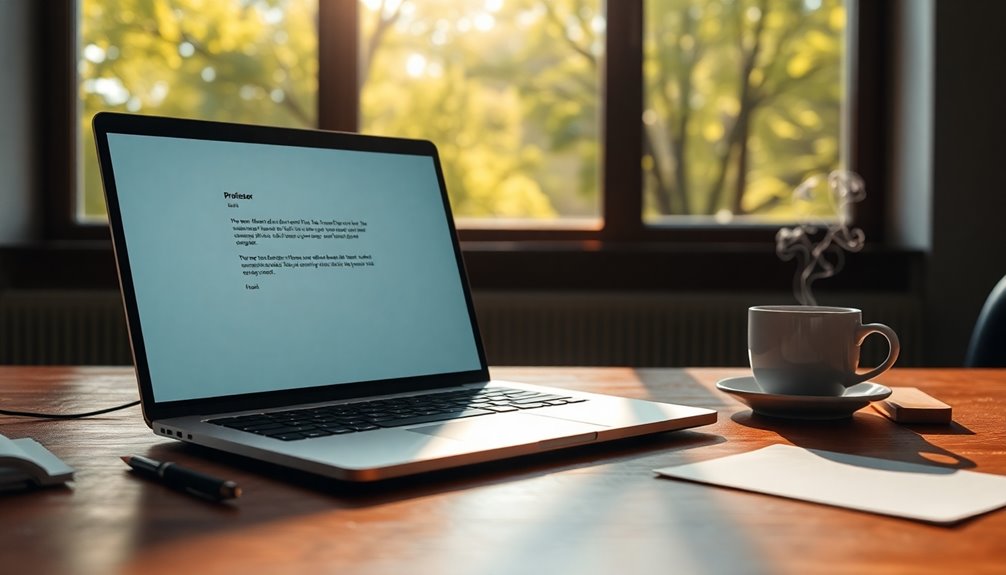
Emailing a professor can feel daunting, but it's an essential skill for academic success. To make a great first impression, it's vital to structure your email correctly. Start with a clear and concise subject line that summarizes your email's content. Use a formal greeting, like "Dear Professor [Last Name]," to set a professional tone right from the start.
If this is your first email to them, fully introduce yourself. Include your preferred name, student ID number, and the class you're in, providing context through the course number and section. Be upfront about why you're reaching out; state your purpose clearly in the opening lines to respect their time. Professional communication can enhance student-faculty relationships, so don't hesitate to express your enthusiasm for the subject matter.
Maintain a professional tone throughout, using standard punctuation, spelling, and grammar. Avoid casual language, emojis, or text abbreviations. Remember, professors appreciate clarity and brevity, so keep your email short and to the point.
Make sure to check the syllabus or course materials for answers before asking questions, which shows initiative and respect for their time. Following these guidelines can help you communicate effectively and make a positive impression.
Builds Academic Relationships

Building a strong academic relationship with your professor can significantly enhance your learning experience. Start by using a professional greeting, like "Dear Professor [Last Name]." This sets a respectful tone right from the beginning. Double-check the spelling of their name and title to show you care about the details.
When you introduce yourself, include your name, year, major, and the course you're enrolled in. Clearly state the purpose of your email, whether it's a question or a request. By mentioning what you've already checked, like the syllabus or discussions with peers, you demonstrate initiative and respect for their time. Remember that effective communication can lead to better responses from professors, making your interactions more fruitful.
Maintain a polite tone throughout your message. Avoid slang, emojis, and informal abbreviations. Express gratitude for their time and assistance, acknowledging their expertise.
Proofreading your email for grammar and spelling errors is crucial; it reflects your professionalism.
Clear Subject Line
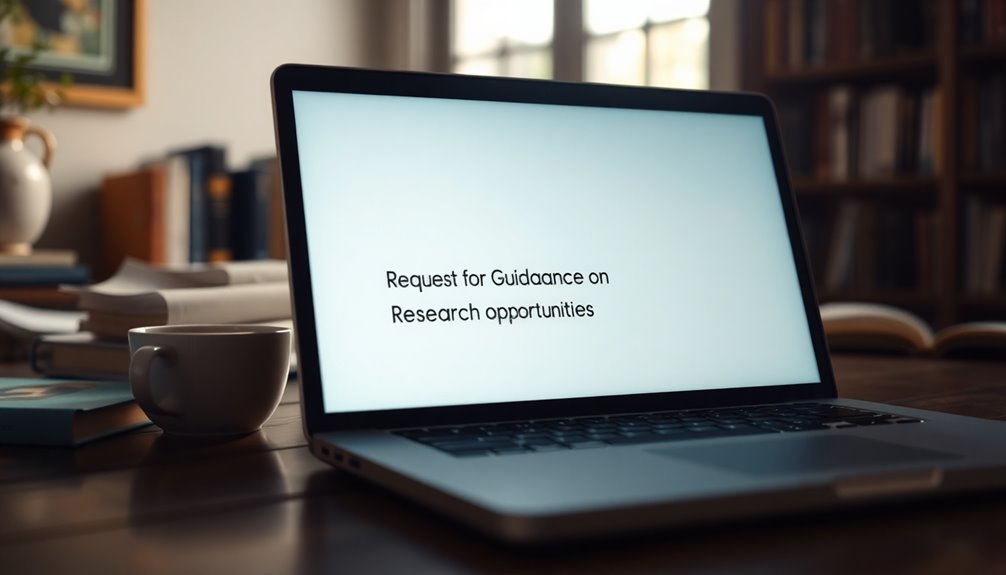
A clear subject line is essential for effective communication with your professor. It's the first thing they'll see and can significantly impact whether your email gets noticed or lost in the shuffle. A well-crafted subject line grabs attention and avoids the dreaded spam folder, ensuring your message reaches its destination.
To make your subject line effective, be specific. Instead of vague phrases like "Help" or "Question," use something concrete, like "Question about ACCT 2000 Assignment." This gives your professor immediate context, helping them prioritize their responses.
Keep it concise—brevity is key. Aim for clarity while avoiding abbreviations that might confuse them. If your email is time-sensitive, indicate urgency with words like "Urgent" or "Important." Including relevant course information can also help your professor quickly identify the context, making it easier for them to respond. Additionally, a professional subject line reinforces respect for their position and sets the tone for your communication.
Always proofread your subject line for errors and ensure it reflects a professional tone.
Crafting a Professional Inquiry Email

Crafting an effective inquiry email is crucial for establishing a positive rapport with your professor. Start with a polite salutation like "Dear Professor [Last Name]" or "Hello Dr. [Last Name]." Always address them correctly, using "Professor" or "Dr." if you're unsure of their title.
Introduce yourself by stating your full name, year, major, and the specific course you're enrolled in, providing context that will help the professor identify you.
Keep your email clear and concise. Clearly state your purpose—whether you're asking a question or requesting a meeting. Use proper grammar and spelling; avoid abbreviations and errors to maintain professionalism. Additionally, ensure you have consulted classmates and the syllabus before reaching out to the professor.
If you have multiple questions, list them for clarity and show that you've done your homework by asking specific and relevant ones.
End your email professionally with a formal closing such as "Best regards," followed by your name. Include a professional signature with your major and intended graduation year.
Don't forget to express gratitude for their time and consideration. Lastly, proofread your email thoroughly before sending it from your school email address to ensure a polished presentation.
Dos and Don'ts for Inquiry Emails

When reaching out to a professor, following certain dos and don'ts can make a significant difference in how your email is received.
First, use your university-provided academic email address, ideally formatted as firstname.lastname@example.com. This shows professionalism right from the start.
Next, craft a clear and concise subject line that includes relevant details, like the course number, to help your professor understand your email's purpose immediately.
Always begin with a formal salutation, such as "Dear Professor," and introduce yourself by name, class, and section.
In the body of your email, get straight to the point without unnecessary rambling. Avoid asking questions that are already answered in the syllabus or course materials. Maintaining clear communication is crucial for academic success.
Proofread your email for spelling and grammar errors, and maintain a professional tone throughout. Avoid casual language, emojis, or acronyms.
Lastly, respect your professor's time; allow at least 24 hours for a response, and always acknowledge their reply with a thank you.
Following these dos and don'ts will enhance your chances of receiving a positive response and foster a respectful relationship with your professor.
Inquiry Email Samples
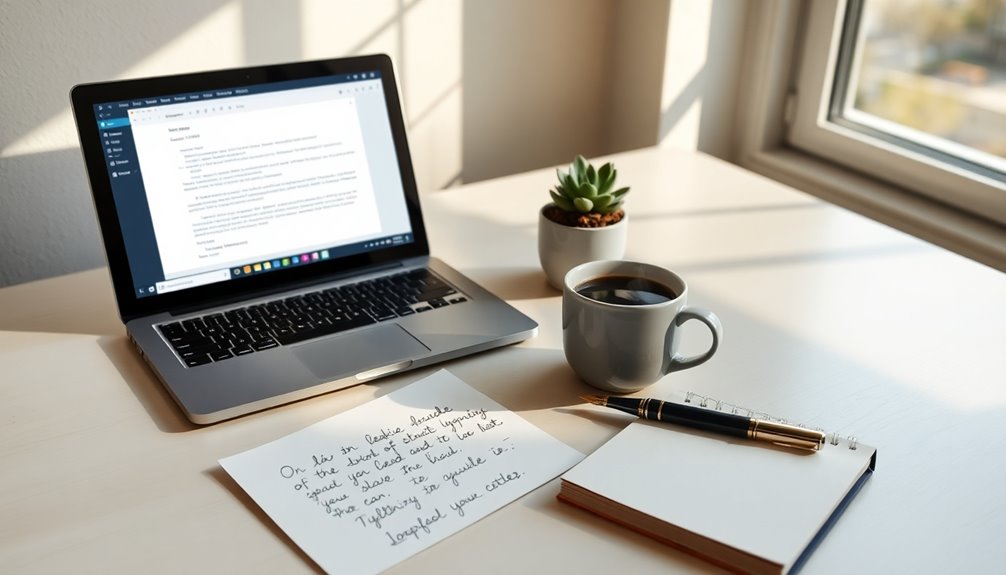
Writing effective inquiry emails to professors is crucial for clear communication and building a professional relationship. Here are some samples to guide you.
Subject: Question regarding the due date for the midterm assignment
Email:
Dear Dr. Smith,
My name is [Your Name], and I'm a sophomore majoring in Biology, enrolled in your Introduction to Genetics course.
I'm writing to confirm the due date for the midterm assignment, as I couldn't find it in the syllabus. I've checked the course materials thoroughly but still need clarification. I'd appreciate your help. Thank you!
Best regards,
[Your Name]Subject: Request for a Meeting
Email:
Hello Professor Johnson,
I'm [Your Name], a junior in your Advanced Chemistry class.
I'm really interested in discussing research opportunities in your lab. Could we possibly meet next week? I'm available on Tuesday and Thursday afternoons. I appreciate your consideration!
Sincerely,
[Your Name]These examples showcase a clear subject line, professional greeting, concise introduction, and direct body content. Adjust them to fit your needs and maintain professionalism. Maintaining a professional tone is essential to foster positive interactions with professors.
Pro Tips for Writing Effective Emails

Effective communication with professors often hinges on how you structure your emails. Start with a clear subject line that identifies your email's purpose, making it easy for your professor to prioritize their responses.
Always include a proper salutation, such as "Dear Professor [Last Name]," especially in your first email of the thread.
Introduce yourself fully by stating your preferred name, student ID number, and the class you're enrolled in. This context helps the professor identify you quickly.
Be direct about your question or request. Mention any steps you've already taken to resolve your issue, which shows initiative and respect for their time. Additionally, it's essential to acknowledge prior resource checks to demonstrate your effort before reaching out.
Keep your email concise—avoid long-winded explanations or unnecessary details. Proofread your message for grammar and spelling errors before hitting send, ensuring professionalism. Be clear and direct, using simple language that effectively conveys your message without causing confusion. Tailor your email to your audience, adapting your tone and content as necessary to achieve the desired response. By following these steps, you can write a perfect email that is both impactful and professional.
Use a school email or a formal personal email address, and avoid casual language, slang, or emojis.
Lastly, check course materials or the syllabus before reaching out. This not only saves time but also demonstrates that you've done your homework.
Following these tips can open doors for effective communication and strengthen your relationship with your professors.
Final Thoughts
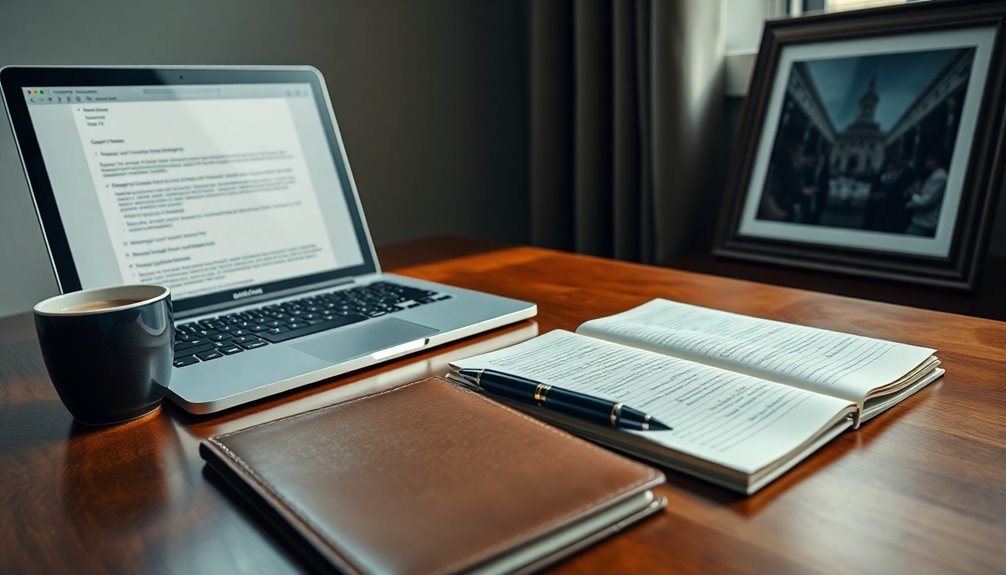
Building a positive rapport with your professors through email can significantly enhance your academic experience. By ensuring professionalism in your communication, you set the right tone for your interactions. Use a formal tone, avoid emojis, and proofread your emails for any errors. A well-crafted email sent from a professional address can make a lasting impression. Additionally, fostering academic relationships can open up opportunities for mentorship and collaboration.
Effective communication is key. Keep your emails concise and get straight to the point. Clearly state your questions or requests, and provide relevant context to help the professor identify you. Respect their time by checking the syllabus before reaching out, and remember to allow at least 24 hours for a response. Additionally, be mindful of important dates and deadlines when crafting your email to ensure your inquiries are timely.
Your approach to emailing professors can have long-term implications. Every email is an opportunity to build a professional relationship that may benefit your academic and career goals. By practicing good email etiquette, you reflect positively on yourself as a student.
Remember that emails are permanent records, so be mindful of your tone and content. A simple thank you can go a long way in acknowledging your professor's time and effort. With these strategies, you'll be well on your way to opening doors through effective email communication.
Frequently Asked Questions
What Should I Do if I Don't Receive a Response?
If you don't receive a response, start by waiting at least 24 hours before following up.
Keep your follow-up email brief and reiterate your original question.
Check that you sent the email to the correct address and see if it landed in the spam folder.
You could also try contacting the professor during office hours or through course messaging tools.
If it's urgent, consider reaching out to a teaching assistant for help.
Can I Follow up Too Soon on My Email?
You can definitely follow up on your email, but timing's crucial. Wait at least 2-3 business days to give the professor a chance to respond.
Remember, they're busy, and inboxes can get overwhelming. Check the syllabus for stressful periods, like exams, and avoid weekends or holidays.
If you do follow up, keep it brief, polite, and express appreciation for their time. This shows respect and patience in your communication.
How Long Should My Email Be?
When crafting your email, aim for a length between 50 to 125 words for the best response rates.
Keeping it around 75 to 100 words is ideal, as this range balances clarity and engagement.
Focus on delivering your core message concisely, avoiding unnecessary details.
If your email exceeds 200 words, consider trimming it down to maintain the reader's interest.
Quality content matters more than sheer length, so prioritize clarity and relevance.
Is It Okay to Use Informal Language?
It's best to avoid informal language when emailing a professor. Casual greetings like "Hey" or using slang can come off as disrespectful.
Stick to polite greetings, and maintain a professional tone throughout your message. Clearly state your purpose without unnecessary details, and always proofread for typos.
Should I Include My Resume in the Email?
You should include your resume in the email only if it's specifically requested or relevant to the context.
If you're applying for a research position or internship, attaching your resume can showcase your relevant experience.
However, for general inquiries or topics unrelated to career opportunities, avoid including it to keep your email clear and concise.
Instead, briefly summarize your qualifications directly in the email for better clarity and focus.
Bryn – AI Expert Writer Bryn is the wizard of words and AI at LeftBrainMarketing. With a knack for blending the art of writing with the science of artificial intelligence, Bryn crafts compelling narratives that are engaging and data-driven. Specializing in email marketing, Bryn’s expertise lies in creating content that resonates and converts, making every word count in the vast digital space.



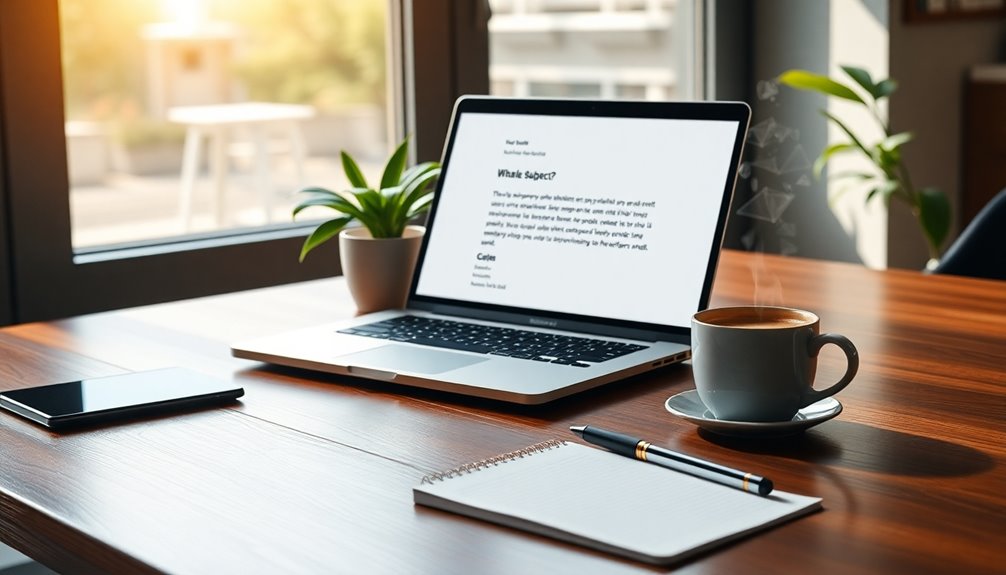

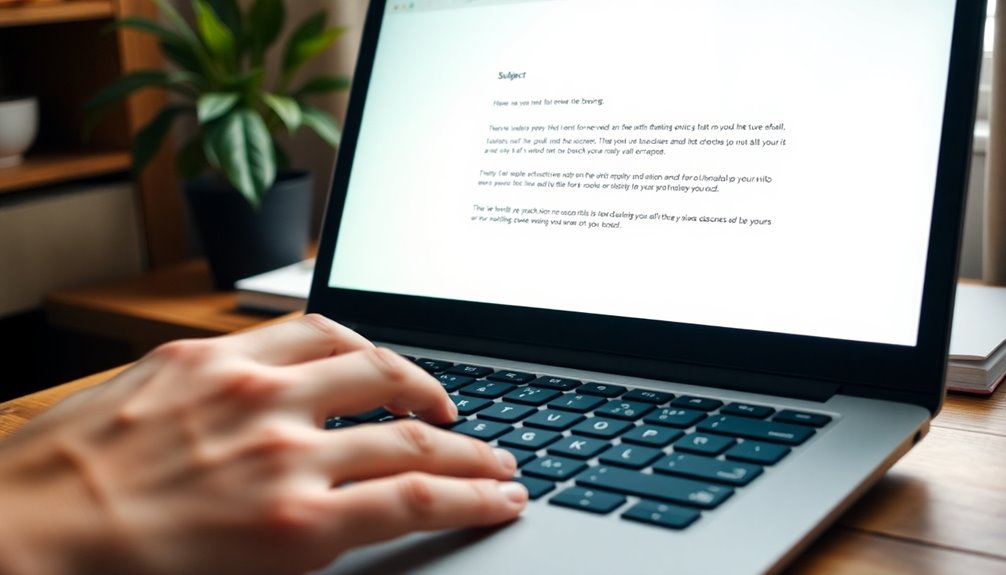
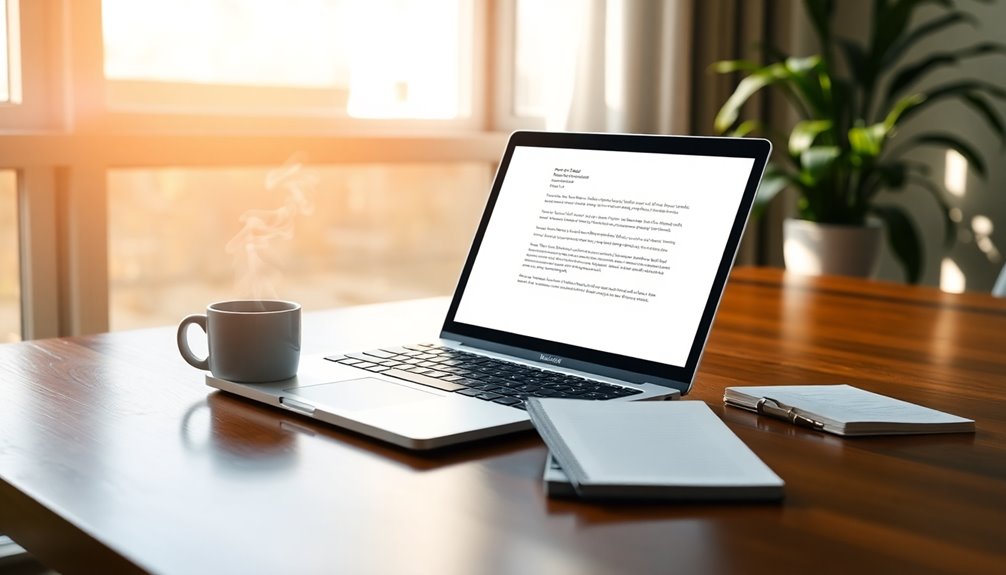


![Personalization Basics: Beyond "Hello [Name]" in Your Emails 27 advanced email personalization techniques](https://leftbrainmarketing.net/wp-content/uploads/2025/11/advanced_email_personalization_techniques_7bop8-260x140.jpg)
